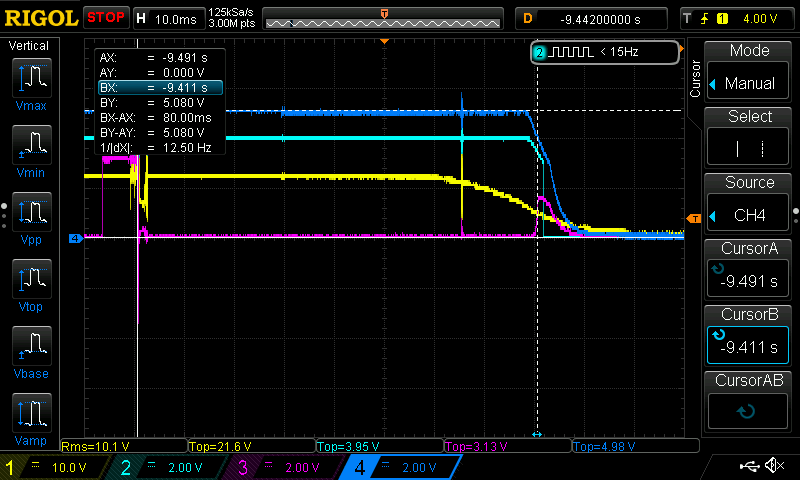Hi team,
I apologize for a late reply, but i didn't have opportunity to work with TPA3221.
In the meantime I have created a smaller development variant where other modes can be set, but it is still not functional.
I send a two screenshot of oscilloscope.
At first is startup without destroy
(yellow-RESET,
light-blue - MUTE,
pink- FAULT
dark-blue - OTW.)
and second startup with destroy
(yellow-PVDD,
light-blue - RESET,
pink- FAULT
dark-blue -VDD.)
-All input/output pin will were checkt -
-without output short circuit
PVDD = 12V
VDD = 5V (+-0.5)
I_pvdd = <0,1A
HEAD = 0
IN1_P = Nc
IN1_M = Nc
IN2_P = Nc
IN2_M = Nc
OUT_1_P = Nc
OUT_1_M = Nc
OUT_2_P = Nc
OUT_2_M = Nc
Does you have any idea ?
This is very important, because similar circuit doesn´t exist.
Thank you for your time
best regards
Michael



















